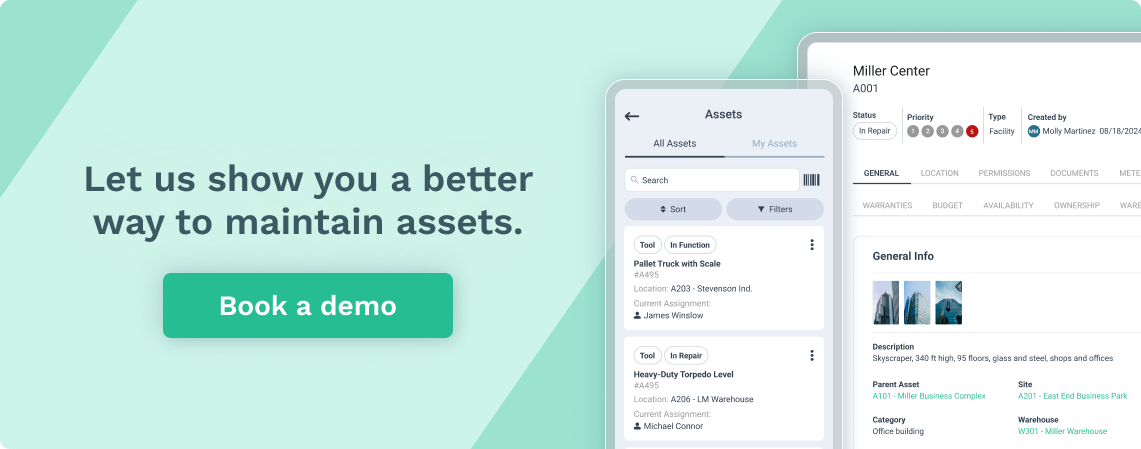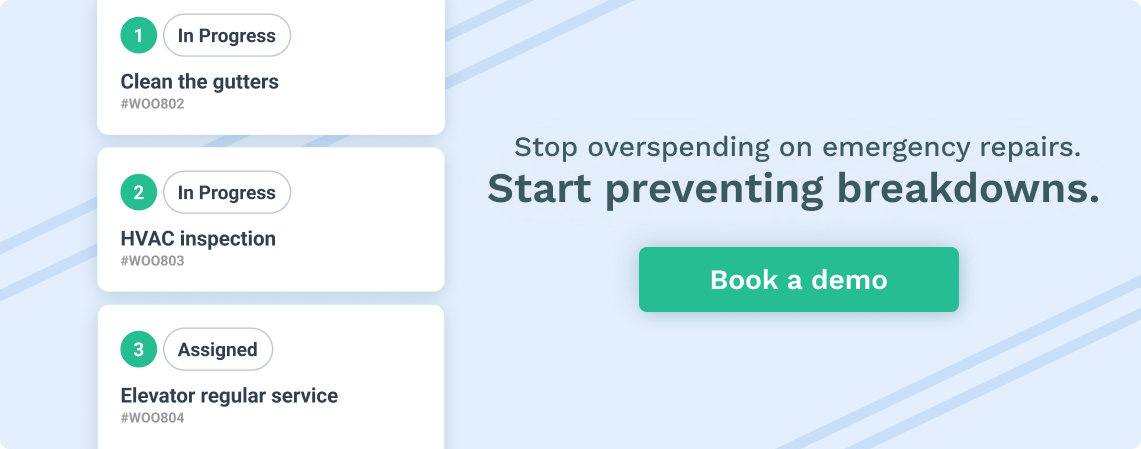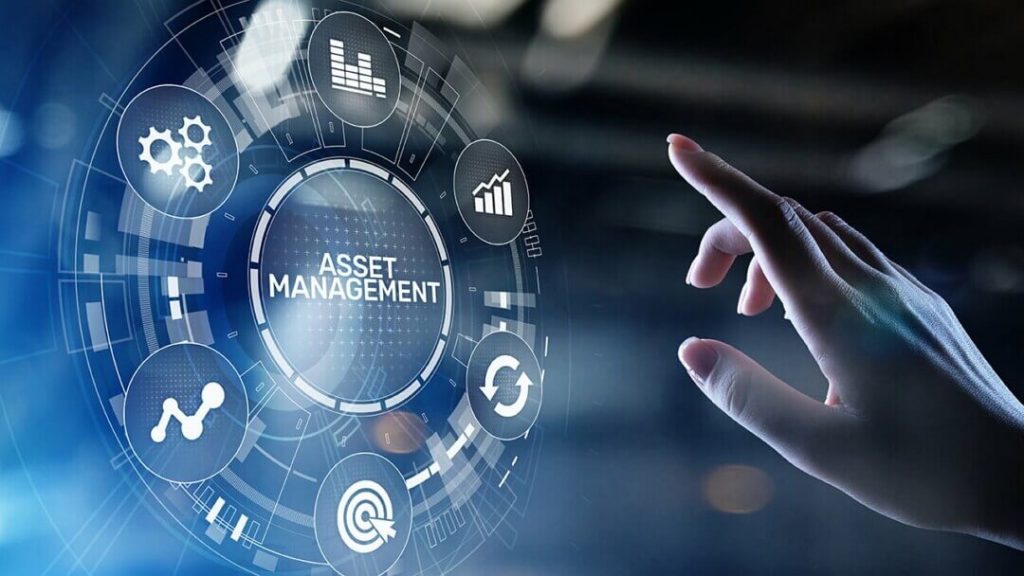Get a Free WorkTrek Demo
Let's show you how WorkTrek can help you optimize your maintenance operation.
Try for freeIn the industrial sector, your company constantly faces increasing pressure to improve its customer service, increase its performance, and ensure the availability of its assets. Tracking these is an essential step that saves your organization both money and time.
From the moment they are acquired until they are disposed of, assets play a predefined role. Indeed, when properly selected, configured, and maintained, and you have access to the right information at the right time, they can reduce your costs and bring you a significant return on investment.
To do this, good management practices, including the acquisition of an automated maintenance management solution, can help your organization achieve its goals.
What Is An Asset?
An asset is an item of value owned by an organization or individual. Assets are divided into tangible assets (physical assets such as land and machinery) and intangible assets (information technology assets such as copyrights, trademark rights, and computer software).
Within tangible assets, there are two subcategories: current assets (cash, inventory) and fixed assets (equipment, buildings, machinery, and other physical resources used in the operations of a business that are unlikely to be sold). When we talk about asset lifecycle management, we’re talking about managing the lifecycle of fixed assets.
What Is Asset Lifecycle Management?
Asset management is a relevant concept for each sector in the industry and is also an integral part of maintenance processes. For manufacturing companies, this management concerns the entire life cycle of assets within the plant, such as equipment, parts, production lines, and the company buildings themselves. This also includes making decisions about their use, their investment and disinvestment policies, and portfolio management.
By definition, the life cycle of an asset is its ability to perform its function, under conditions of use and maintenance, until the end of its useful life or its limit state is reached. As the name suggests, the cycle involves a series of stages in the life of the equipment.
Lifecycle management, then, is about adopting best practices to track them throughout their existence and extend their use as much as possible, while optimizing how you use your time, data, and resources. Optimization, ongoing maintenance, replacement, or more recent upgrades are therefore part of the “activities” to be managed on a daily basis.
If one step in a process is overlooked, it can lead to breakdowns, downtime, and emergency replacements.
Why Should Asset Management Be Used?
IT departments have many responsibilities, such as maintaining system uptime, supporting users, and managing hardware and software inventory. Some companies use spreadsheets or a lightweight database to manage their inventory, but these solutions typically don’t allow real-time, shared access to data. Managing inventory in this way can be very complex.
Quality Asset Management practices will allow you to have a good command of your inventory, which will help you in the day-to-day management of assets and their finances, as well as in carrying out audits and compliance checks. Asset management is important for several reasons:
Resource utilization optimization
Asset management ensures that the company’s resources are used efficiently and optimally. This can help reduce costs and improve business efficiency.
Equipment monitoring and maintenance
Asset management helps track and maintain enterprise assets, which can extend their lifespan and reduce long-term maintenance costs.
Data security
Asset management ensures the protection of corporate data against loss, leaks, and security breaches. It can also help meet regulatory compliance requirements for data security.
License management
Asset management helps to ensure that the company uses software and licenses in a legal manner and in accordance with the terms of use. This can avoid lawsuits for unauthorized use of software and associated costs.


The 4 Key Stages Of The Asset LifeCycle Management
Your maintenance department teams are not only responsible for the health of the equipment, from its acquisition to its disposal, but also for controlling the corresponding expenses. Several questions then arise:
- What is the lifespan of the equipment?
- When will the equipment provide maximum operating gain?
- Should it be downgraded or resold?
- When should you stop maintenance operations or when should you start renovating?
Tracking an asset’s lifecycle provides valuable insight into how the asset is performing, and also when it is best maintained.
Each of them also has a cycle divided into 4 key stages:
-
Planning
The planning phase consists of gathering all the strategic information and relevant data for the acquisition of an asset. This includes trend analysis based on what already exists in your software and your business needs. A CMMS tool, for example, has the ability to compare the different materials available on the maintenance platform and generate quotes and supplier orders.
-
Procurement
Once an asset has been identified and matches your needs, the next step is to acquire it. It is then necessary to put it into service.
When the asset is finally acquired and deployed, it can then be tracked through its lifecycle using an asset management system. Features such as equipment management, tree structures, adding documents and reports, traceability or barcode labeling will be particularly useful to you.
-
Maintenance/operation
The asset is now installed. At this stage, it helps to generate income.
This phase is probably the longest in the life cycle of an asset, but also the most expensive. It includes all the maintenance and repair that may be necessary, inventory management, performance monitoring and reporting, replacement of components, intervention planning, mobilization of resources and a budget, etc. Regular maintenance keeps assets in their best condition and prevents damage caused by improper maintenance.
Again, obtaining accurate data ensures control to prevent failures. An automated system, therefore, allows your company to measure the condition in real-time.
This step entails:
- Reduction of downtime;
- Reducing unnecessary emergency repair costs;
- Increasing the availability of equipment;
- Extending the life of assets.
-
Disposal of assets
Finally, during this last phase, the product shows repeated failures and can no longer be repaired. It’s time to ask the right questions because your organization’s productivity is suffering. Should we repair the equipment or analyze the cost of a new acquisition? At the end of an asset’s useful life, it is removed from service and either sold, reused, discarded, or recycled.
Get real value for money with WorkTrek!
You have to ensure the growth and profitability of the company!
Technology At The Service Of Asset Lifecycle Management
The real benefits of good lifecycle management are derived and observed from and through the real-time collection of asset data. By making the best use of resources, managers can avoid unnecessary purchases, eliminate waste, and improve overall efficiency.
A CMMS solution represents the ideal tool to track the health and cycle of each asset, provide a continuous flow of data, and reinforce maintenance and equipment planning. Let’s take a look at how using a maintenance management tool can guide you through these processes!
From a global point of view, it allows to:

- Calculate the depreciation value of assets using key performance indicators;
- Build preventive maintenance strategies;
- Ensure compliance with regulatory standards;
- Calculate the cost of supply and replacement;
- Improve the efficiency, reliability, and quality of facilities;
- Reduce maintenance costs;
- Get better performance.
Audits To Ensure Continuous Improvement
Probably one of the best ways to ensure your asset lifecycle is improving is to perform audits on your existing processes and practices. The goal? Allow you to understand where your assets are, and what their status is and respect the compliances to which your organization must submit.
Your company and your teams must be vigilant about the accuracy of its asset registers, in particular, because any failure in this regard will have an impact on your internal functioning.
If you notice that you’re overspending on repairs, experiencing multiple unplanned downtimes, and the rate of aging of your assets is increasing, it’s probably time to look into a maintenance and lifecycle management strategy for your assets.
In the long term, this means less replacement, better performance of your equipment, controlled costs, and better productivity. To achieve this, CMMS software gives you valuable usage, status, and lifecycle insights, allowing you to optimize operational efficiency and drive growth for your organization.
What Are The Benefits Of Asset Lifecycle Management?
Here are some of the benefits you get from asset lifecycle management:
- Managing the lifecycle of assets will better account for your needs.
- The right system will help you make an informed buying decision.
- It will improve your motivation when it comes to resource recovery.
- Governance improves the quality of IT services in an organization.
- You always know the total cost of ownership of your assets.
- Managers can view the lifecycle of each asset, which helps them make informed decisions such as when the asset needs to be shut down or whether to sell it.
Conclusion
Asset lifecycle management helps organizations optimize the performance of assets throughout their useful life.
Lifecycle management begins at the planning stage and proceeds sequentially until the product is no longer usable and must be discarded.
Asset lifecycle can also help organizations properly maintain their assets through preventive maintenance.
Asset management software will enable companies to understand the cost of ownership, frequency of use, and performance of an asset throughout its lifecycle.
This allows comparisons with business figures to see how your property compares to business standards. Accurate asset lifecycle management is required to maintain a competitive advantage in the market.












